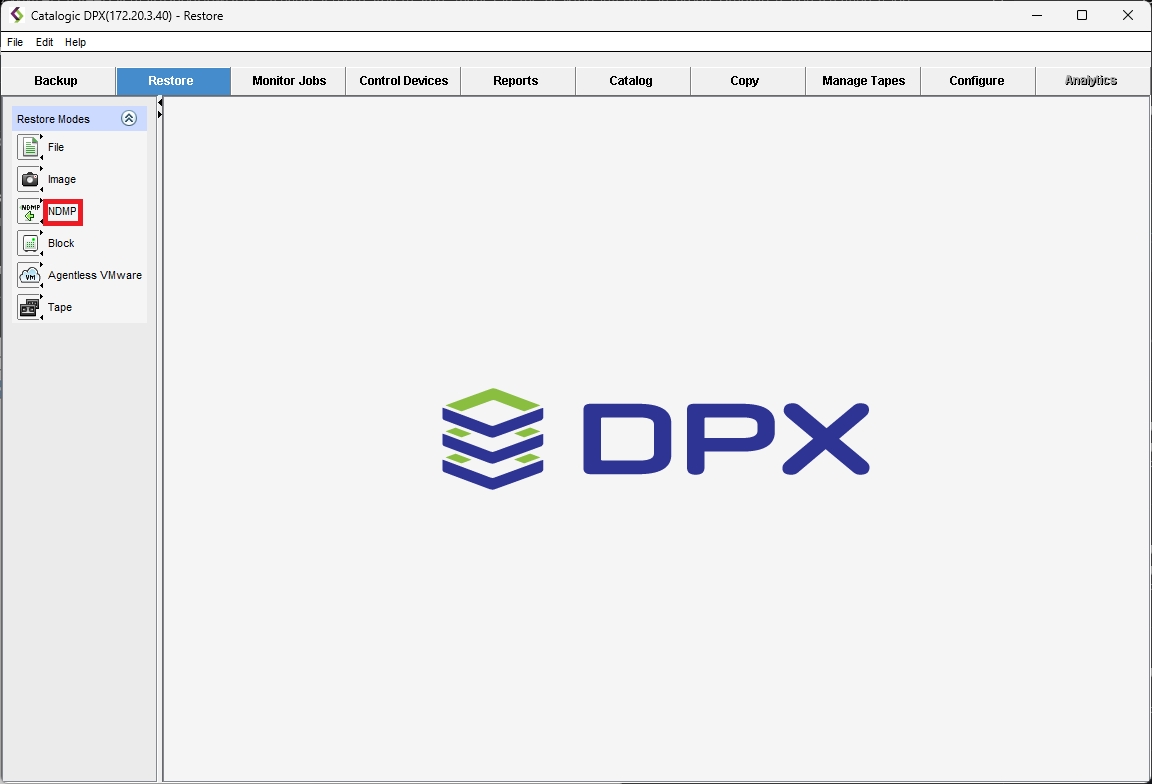Creating an NDMP Restore Job
To run a successful image backup, you must first define an NDMP Backup job. You also need access to an NDMP backup to restore from.
In the main desktop interface window, go to the Restore tab, and from the Restore Modes section in the task panel, choose NDMP.

This action will take you to the view for defining a new restore job. If you were editing a different restore job and wish to start a new one, click Define New Restore Job.

Select the source (a previously created NDMP backup) and the destination for your restore job. Then, click Save Restore Job.
Attention! If the status of a disk object is offline, you cannot browse the disk in the management console or select it as a restore destination.

Now you can create a Job Name, select a Folder, and add a Comment to your Restore Job. When you click OK, your NDMP Restore job will be saved.

Last updated